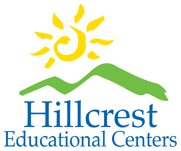Monitoring of security related performance is conducted on an ongoing basis in different ways.
1. Staff knowledge and skills
The monitoring of staff knowledge and skills associated with security is conducted through regular observation of performance by supervisors, through formal supervision meetings, through annual performance evaluations, and through training conducted at least twice each year.
2. Level of staff participation
The monitoring of staff participation is accomplished through means described in section 1. above.
3. Monitoring and inspection activities
Hazard surveillance inspections are conducted on each campus at least quarterly. Hazard surveillance inspection reports, any security related reports and any investigation findings are reviewed by campus Environment of Care Committees, as they occur.
4. Emergency and incident reporting
All incident reports, including reports related to security, are reviewed by supervisors, nursing staff, clinical staff, and program administrators. Security related reports are also reviewed by the campus Environment of Care Committee and by program and agency administration.
Incidents that are not documented require follow up by supervisors, and incident reports which are not completed correctly or according to procedure, are returned for follow up by the supervisor.
5. Inspection, preventive maintenance and testing of equipment:
Security related equipment (e.g., video monitor/recording systems) is checked daily at all program sites and is tested/inspected and maintained on a schedule recommended by the manufacturer.
